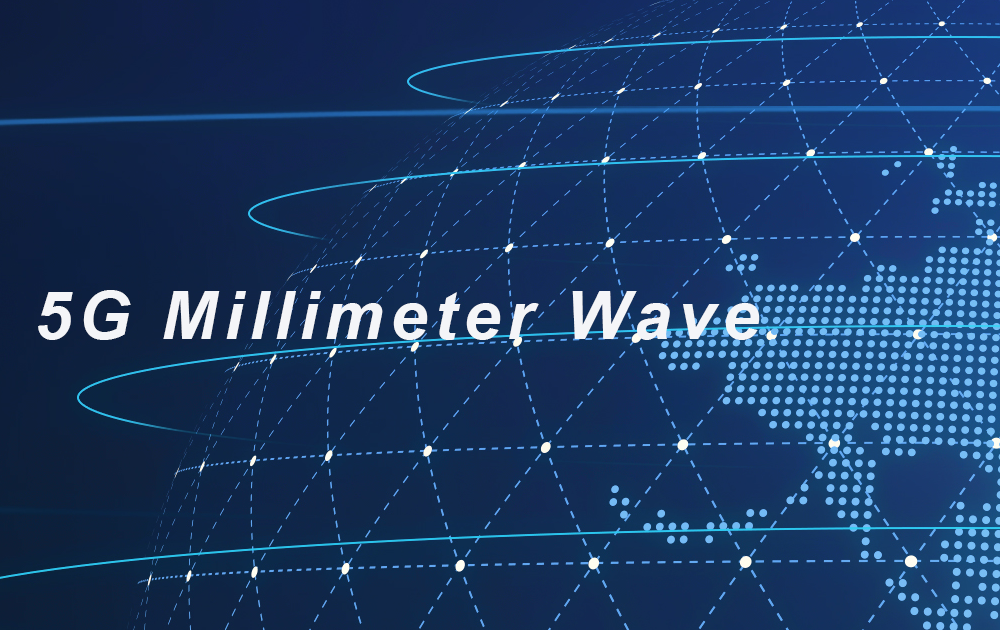5G millimeter wave technology is an important basic technology in 5G applications. Millimeter wave refers to a special electromagnetic wave with a wavelength of 1 mm to 10 mm and a fluctuating frequency of 30GHz-300GHz. Compared with frequency bands below 6GHz, millimeter waves have unique advantages such as large bandwidth, low air interface delay, and flexible air interface configuration, which can meet the needs of future wireless communications for system capacity, transmission rate, and differentiated applications.

1. Spectrum introduction of 5G millimeter wave
Millimeter waves refer to electromagnetic waves with a wavelength of 1 mm to 10 mm. From sound to light, there is a large spectrum that humans can't usually feel, and a section of this spectrum belongs to millimeter waves. The faster the fluctuation, the higher the frequency. In terms of frequency range, millimeter waves refer to electromagnetic waves between 30 GHz and 300 GHz. Millimeter wave is an important part of 5G, and the 5G standard defines the design of Sub-6 GHz (frequency band below 6 GHz) and millimeter wave at the same time.
More than 150 operators around the world are investing in millimeter wave technology: Italy, Japan, Singapore and the United States have deployed millimeter wave commercial networks, and China has also started preparations and testing for millimeter wave technology deployment in 2020.
2. Application significance of 5G millimeter wave
The advantages of 5G millimeter wave not only have continuous 400M and 600M spectrum, but also have a better uplink and downlink rate, which can reach 4Gbps-5Gbps, and can be integrated with various advanced technologies to achieve various applications, and can have stable wireless Data transmission, more flexible deployment.
The introduction of millimeter waves has brought about a huge breakthrough in technology. Before 5G, millimeter waves have never been used in 3GPP international standards. From a global perspective, Sub-6 spectrum resources are very scarce in most countries, including China. As a result, countries are looking to higher-frequency spectrum.
Communication resources are like pipes sending water. The thicker the pipe, the greater the flow. Only a bandwidth of 100-200MHz can be used in the Sub-6 frequency band, but a bandwidth of 800MHz can be used in the millimeter wave frequency band, which is equivalent to obtaining more than 8 times the speed enhancement.
Millimeter wave technology has been practiced in the medical field, and has applications in endocrinology, orthopedics, urology, and pain. Through research, it has been found that every healthy cell in the human body has a certain oscillation frequency, and unhealthy cells, including cancer cells, will exhibit other oscillation frequencies. The millimeter wave technology can make the oscillation frequency of the cells tend to be normal, thereby To achieve the purpose of treating diseases.
3. Development progress of 5G millimeter wave
During the 2021 Shanghai Mobile World Congress (MWC), Qualcomm and China Unicom jointly created the 5G millimeter wave exhibition area, demonstrating the real-time 5G millimeter wave network connection between ZTE-supported networks and terminals equipped with Snapdragon modem and radio frequency systems.
4. 5G millimeter wave performance test
According to news on December 20, 2021, a Chinese company has completed all the functions and field performance test projects of the 5G millimeter wave base station. At the same time, it is the first company to successfully complete the docking test between the system and a third-party terminal.
A few days ago, Huawei also completed all functions and field performance test projects of 5G millimeter wave base stations. The peak downlink rate of a single user under the DDDSU frame structure exceeded 7Gbps. Completed the low-latency high-reliability (URLLC) technical laboratory test, and achieved a two-way end-to-end delay of 1ms at a reliability level of 99.999%.
Due to the advantages of high bandwidth and low latency (0.125ms per square kilometer, 100,000-level connections under 10G conditions), 5G millimeter wave can fully release the potential of 5G, innovate user experience, and drive the digital transformation of thousands of industries. Today, commercial deployments of 5G mmWave are underway around the world: 180 operators in 45 countries are investing in mmWave; 132 operators in 22 countries have allocated mmWave spectrum (usually on a regional basis) ) to support 5G network operations; 28 operators in 16 countries/regions have deployed 5G networks using millimeter wave spectrum; 112 5G devices have clearly supported one or more 5G frequency bands above 24GHz.



















